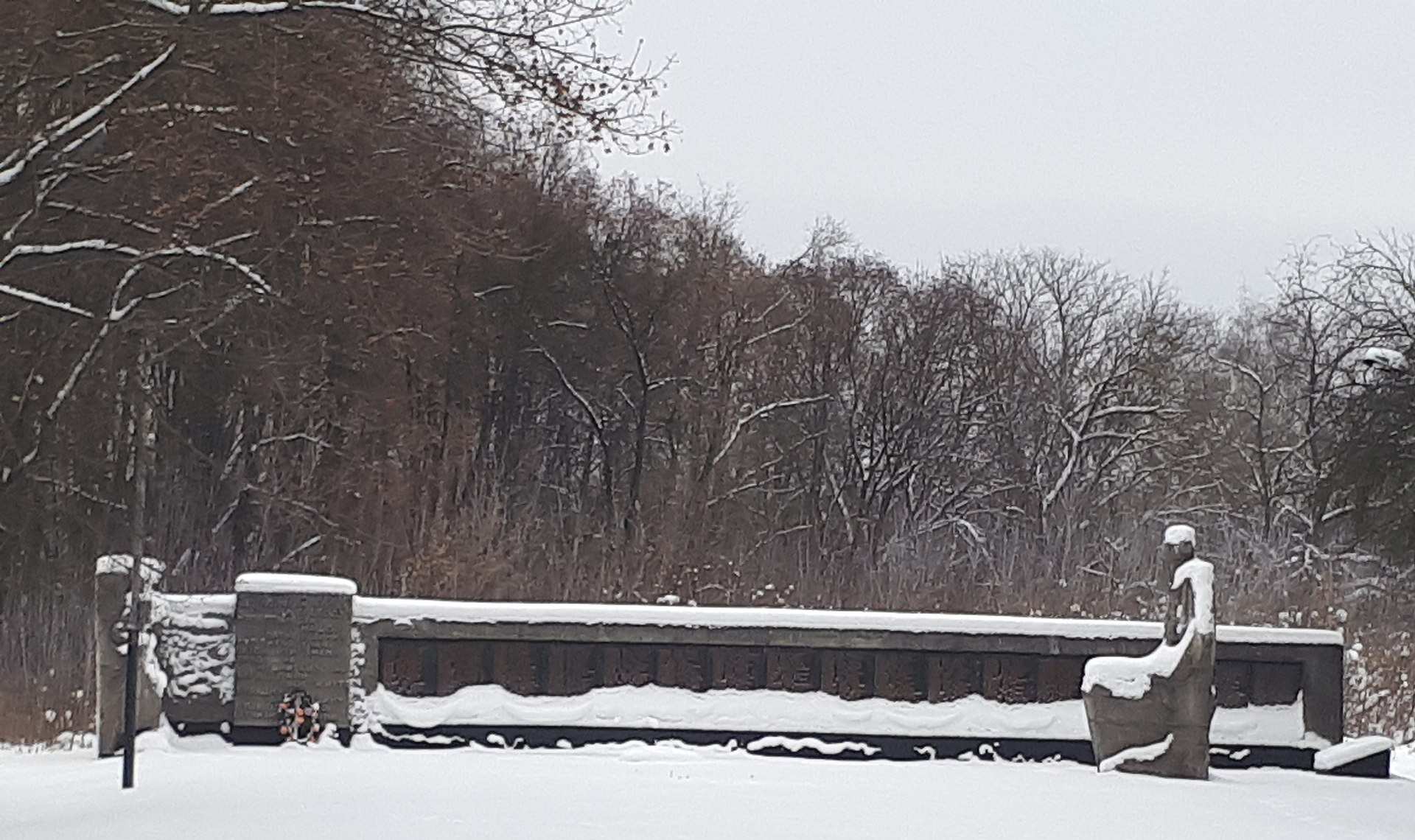- +38(0542)68-77-87
- 116, Kharkivska st., Sumy, Ukraine
- info@el.sumdu.edu.ua
Fraternal group (3): the grave of fighters for the establishment of Soviet power and the grave of Soviet soldiers
Full name of the monument :
Fraternal group (3): the grave of fighters for the establishment of Soviet power and the grave of Soviet soldiers
Region :
Sumy region
Address of the monument :
Shevchenka Str., Nedrigailiv, Romensky district
Status :
Historical monument of local significance
Monument installation year (s) (if available) :
1954
Time classification according to the installation epoch :
Soviet period (1922-1991)
Person/event, object the monument is dedicated to :
real person(s)
Gender :
mixed group
Social status :
persons of war
Components of the monument :
pylon - 3.04 m, pedestal - 0.3 m
Material :
mixed materials
Type of art composition :
architectural object(s)
Artistic approach :
abstract art
Main text, additional text (if available) :
Yes
memorial inscription
Language(s) of the text :
Ukrainian
Narrative commemorates :
Honoring the culture of war victims, including memorialization
The preservation state of the monument at the time of the research :
exists
Institution responsible for maintenance :
Romny city council
Institution’s website :
Free text that contains data valid for interpretation :
In the first grave, active participants in the establishment of Soviet power in Nedrigailiv, shot by Denikinites in 1919, are buried.
and killed in 1921. In the second grave, the head of the communist cell, K. Kigitov, and D. Voloshko, killed by the Makhnovists in 1921, are buried. The exact number of those buried is unknown. In the third grave, a Soviet soldier who died of wounds in 1941 and 13 soldiers who died fighting for the liberation of the village from the Nazi invaders and died of wounds from September 12 to October 30, 1943 are buried. The village was liberated on September 8, 1943. The names of all the dead soldiers are known. . In 1954, a reinforced concrete sculpture of a warrior was installed on the mass graves, replaced in 1979 by a pylon lined with pink granite slabs. In the upper part of the pylon there is a metal bas-relief image of Red Army soldiers and an inscription. On the pedestal there are three granite tombstones with the names of the dead.

